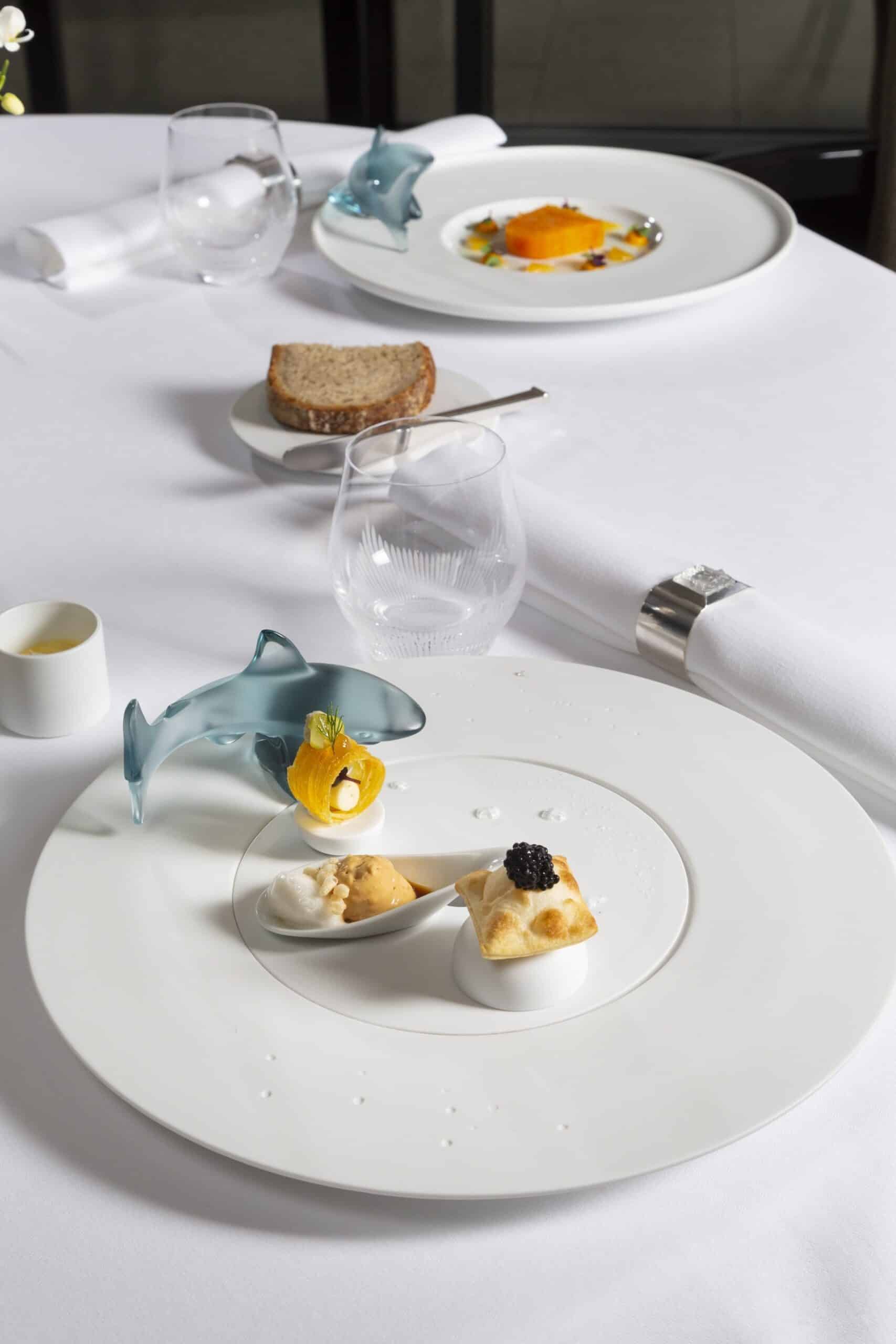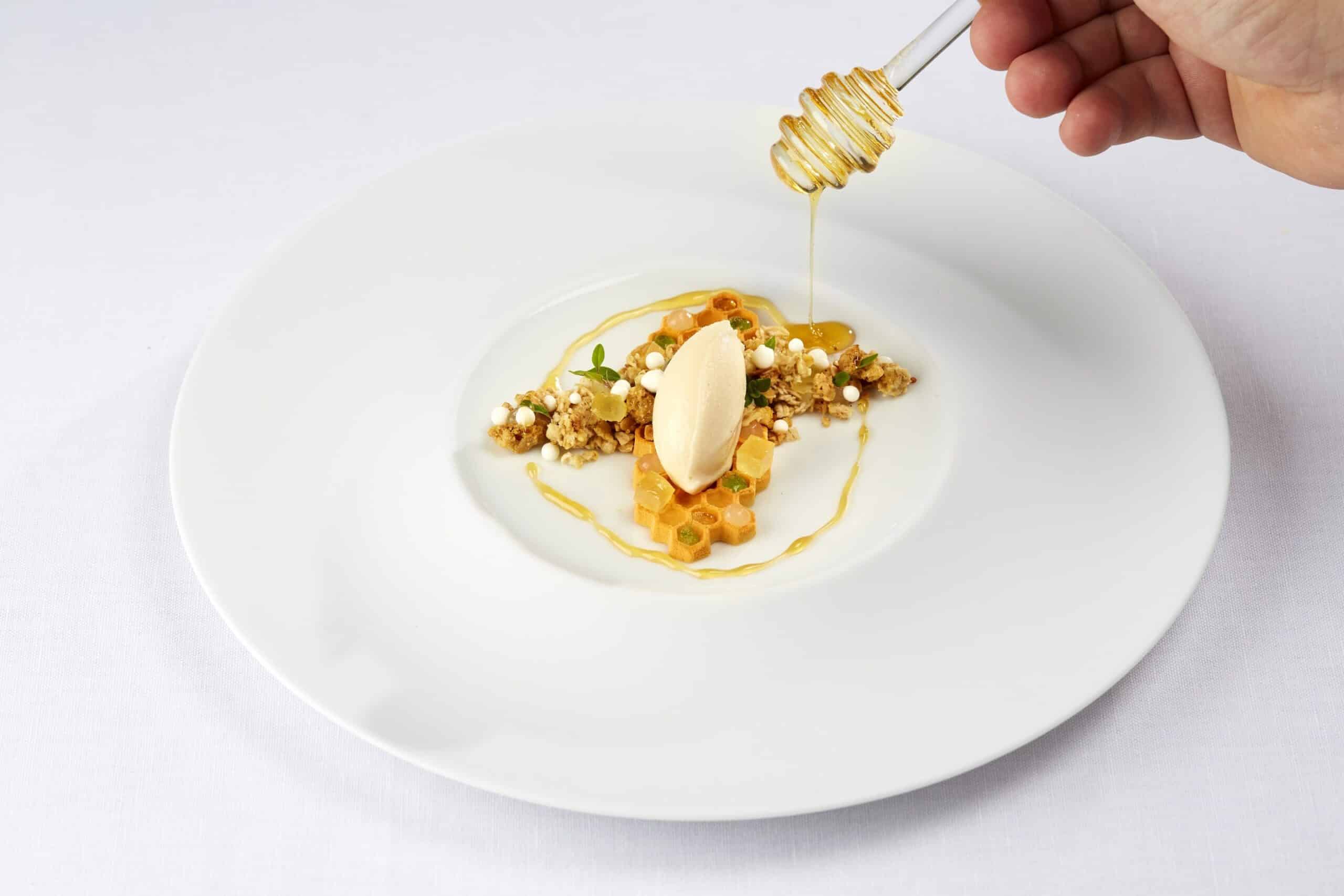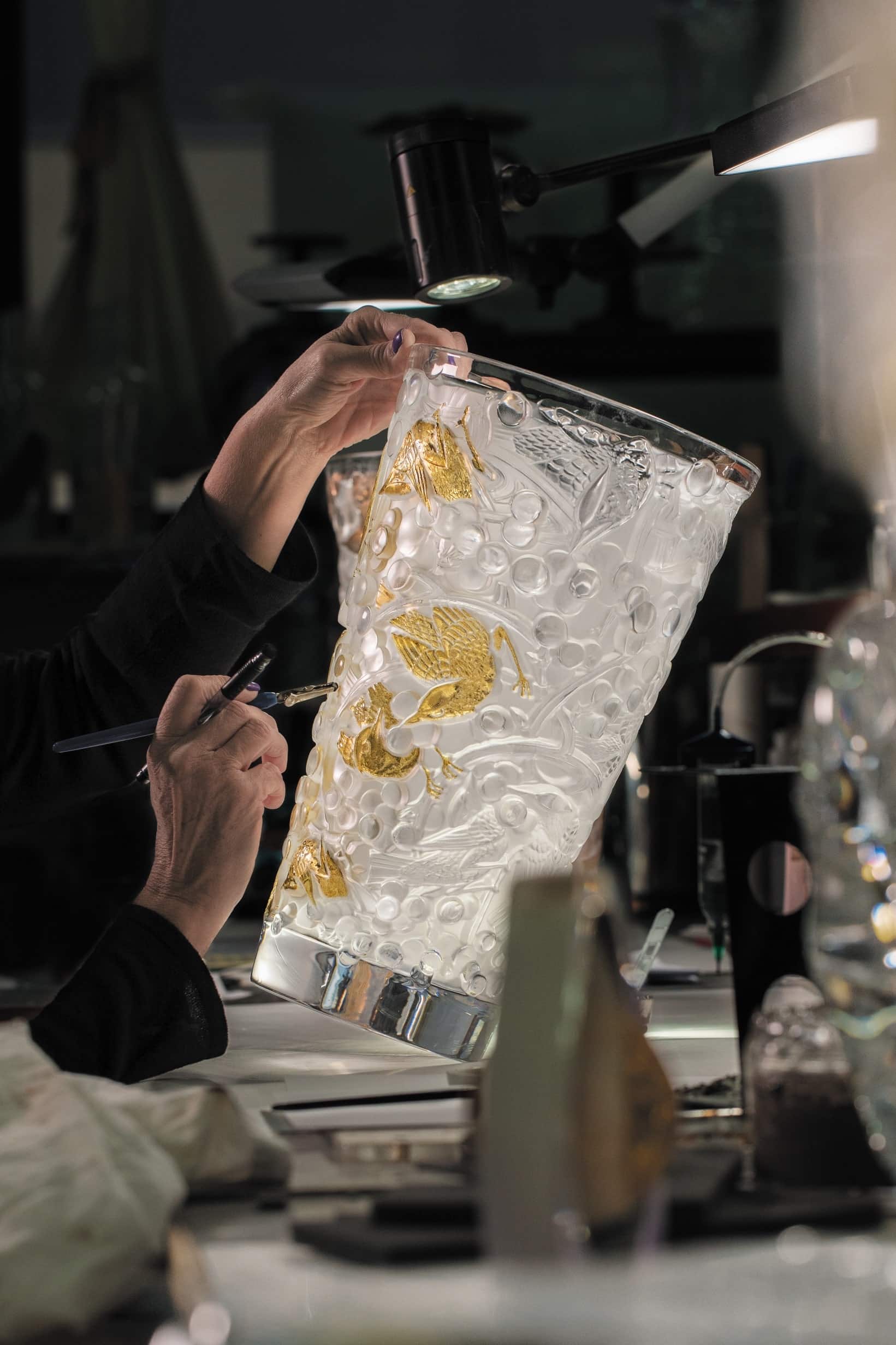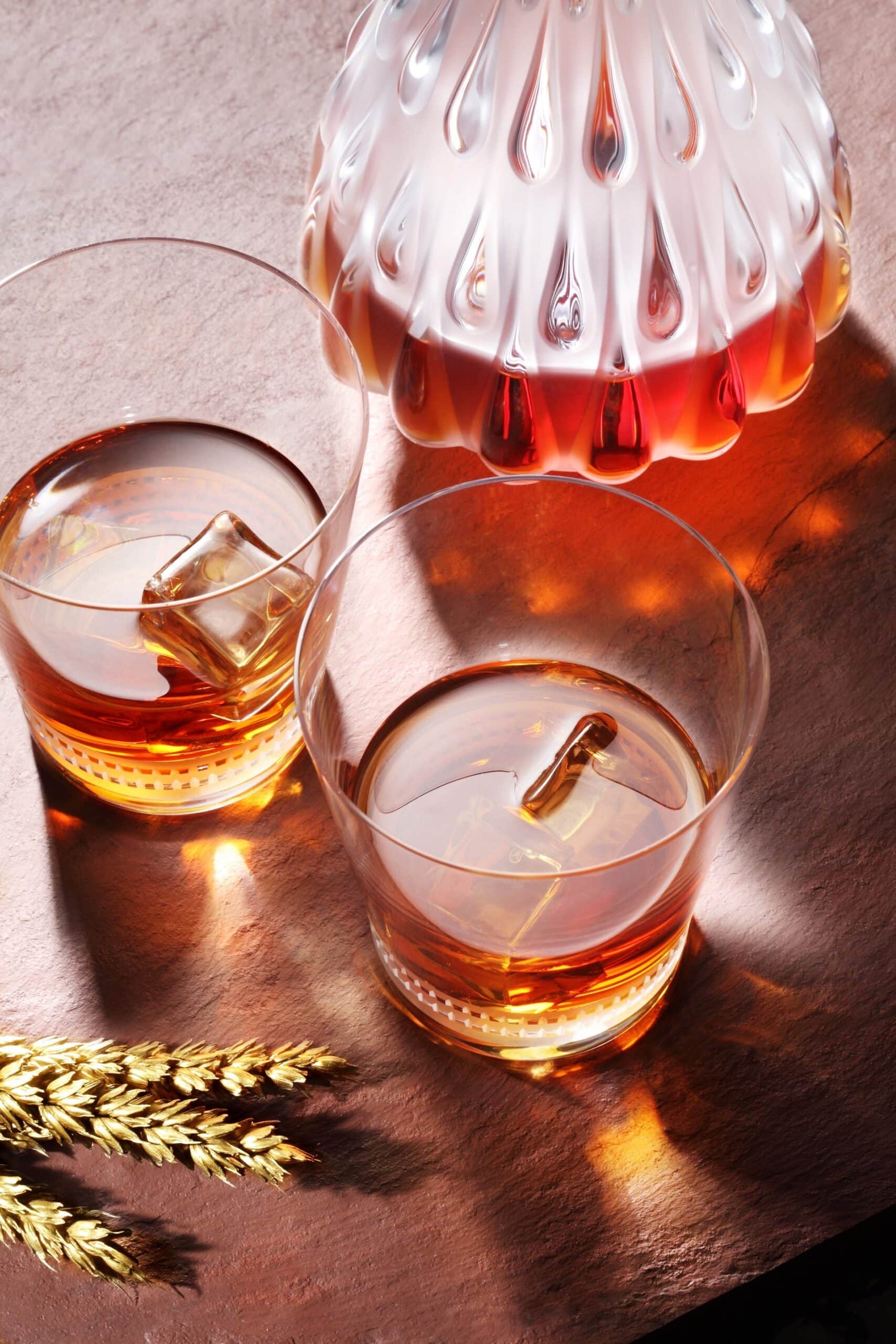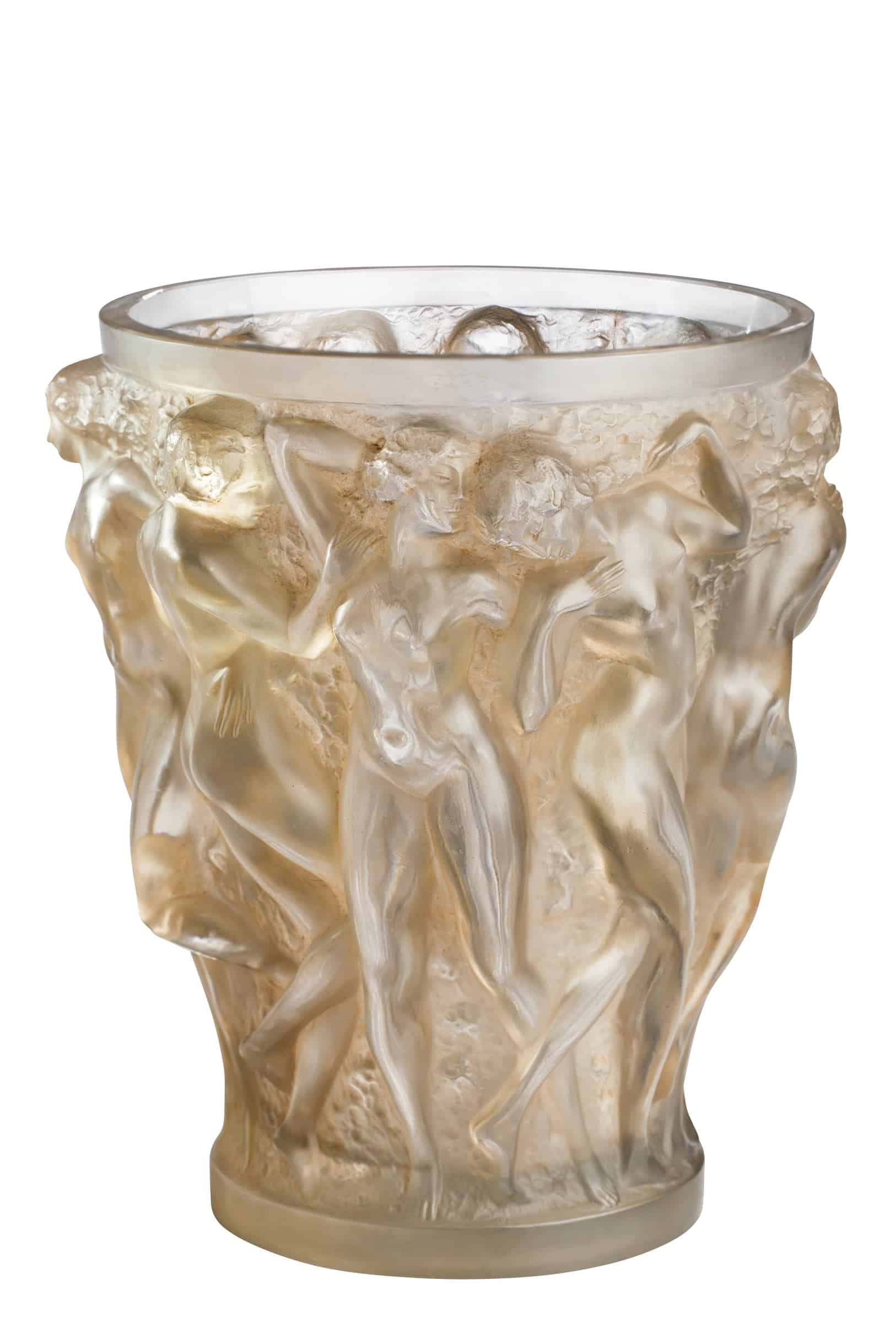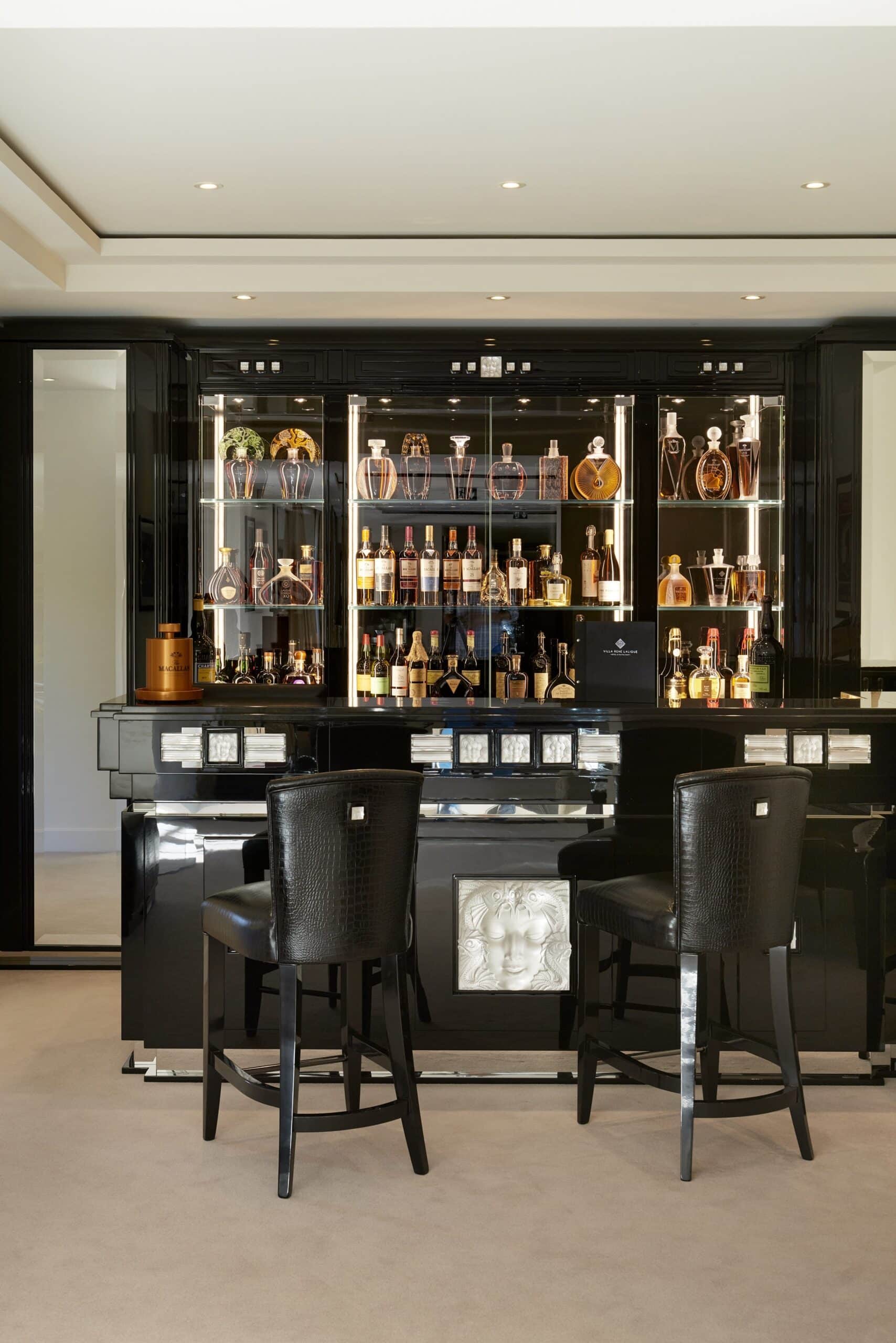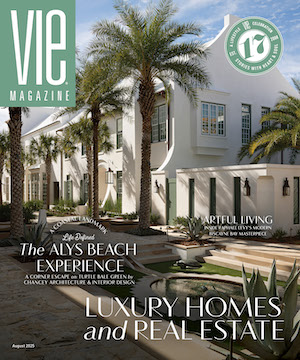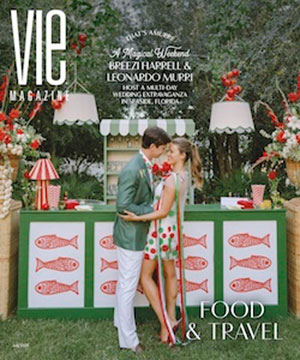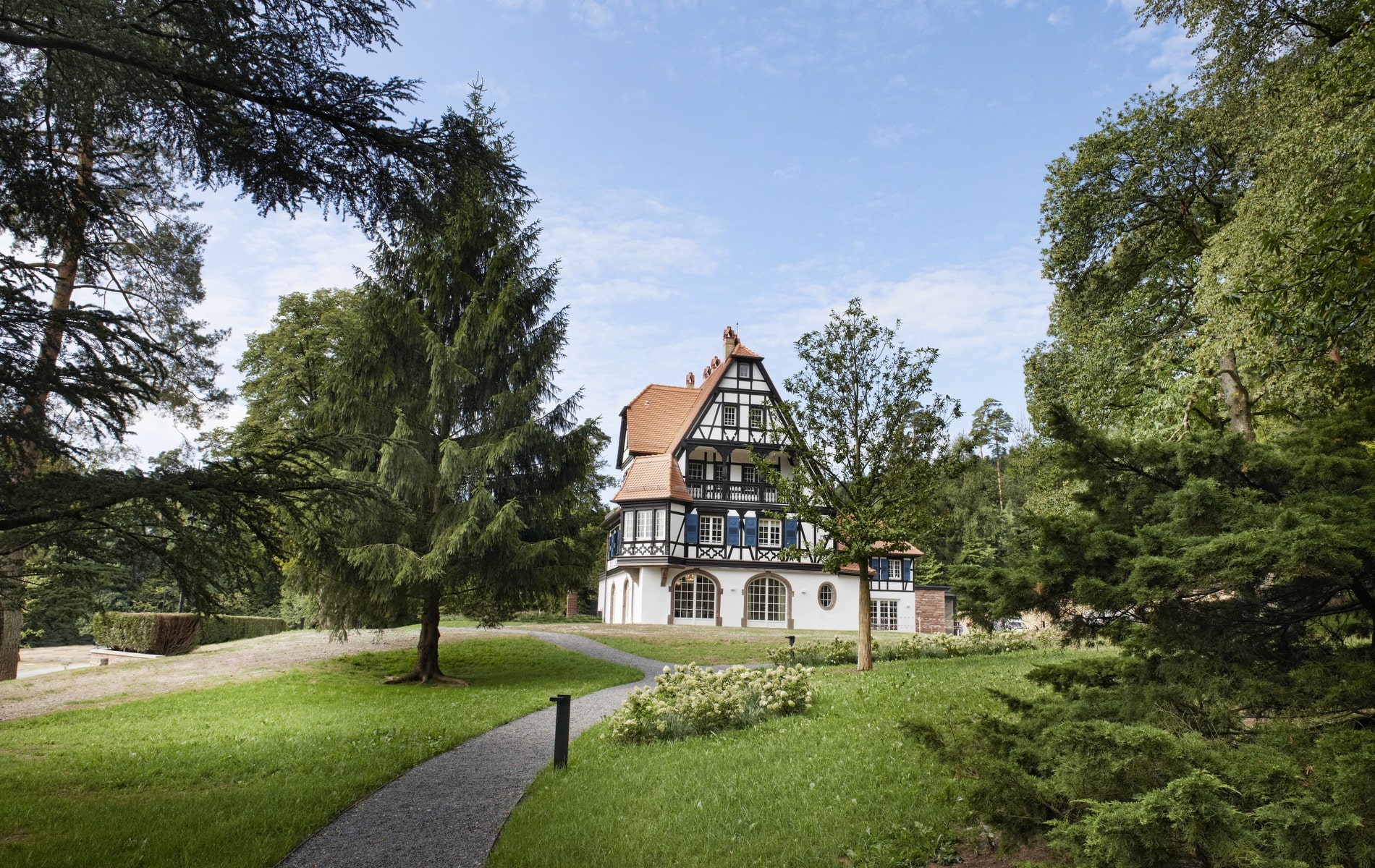
VIE_Magazine_MAY23_article_Lalique_HERO-min
The villa, once home to crystal designer René Lalique, is now a luxury inn with six staterooms. | Photos by Karine Faby
A Crystal Vision
Experience Lalique Like Never Before
By Anthea Gerrie | Photography courtesy of Lalique
Crystal dragons embellish my headboard and console, elegant backlit art nouveau reliefs flank my matching ebony bed, and even my marble bathtub is embedded with mythical creatures sculpted in the same frosted crystal as the precious, intricately carved faucets. It’s only what you would expect of the home built in 1920—at the point where art nouveau meets art deco—for the greatest glass artist the world has ever known.
Welcome to the Villa René Lalique, now a five-star boutique hotel in the French village from where the worldwide output of the most famous brand name in crystal is shipped to galleries and style emporiums worldwide, from Beijing to Bal Harbour.
I opted for the Dragon suite because it is the only one of the six that has a terrace. I imagined it would be the one from which René surveyed his factory down the road in Wingen-sur-Moder, a town associated with glass and crystal manufacture for more than three centuries. However, it turns out René chose to sleep in Hirondelles, named for the swallows that are a signature motif of Lalique; this is the room whose big picture window overlooks the plant.
As I was to learn in the exquisite museum down the road devoted to this master designer and craftsman, jewelry was the subject that preoccupied him at the start of his career in Paris during the belle epoque. He was forty-five before glassware for the boudoir crept into the exquisite collections he showed at his shop on the Place Vendôme, and a friendship with neighboring perfumer François Coty led to the ornate fragrance bottles that would soon become a Lalique signature—most famously the L’Air du Temps flacon for Nina Ricci with its frosted swallows adorning the stopper. They would be followed by everything from wine goblets and decanters to vases, lamps, and chandeliers for homes and palaces, hood ornaments for luxury automobiles, and even fountains for the Champs-Élysées, with the apotheosis of Lalique’s craftsmanship reflected in magnificent fixtures and fittings for the French ocean liner the Normandie.
Pastry chef Nicolas Multon even mimics the anemone motif that adorns classic Lalique vases by hand-sculpting tiny individual edible replicas in quince peel for one of his signature desserts.
Given the need for endurance and a desire for permanence, it is no surprise that since 1945 Lalique has produced only crystal—glass fortified with lead oxide, which not only brings strength to intricate designs that must be hand-sculpted and polished by artisans after coming out of their molds but also adds a level of brilliance second to none—surely the origin of the expression “crystal clear.” An invitation into the factory where the magic takes place—at both the “hot end,” where the furnaces and glassblowers live, and the “cold end,” where the hand finishing is done—is rare. I feel privileged to be allowed in to watch craftspeople considered the very finest in their profession at work. More than two dozen artisans are involved in producing iconic pieces like the Bacchantes vase designed by René Lalique in 1927, from harvesting the molten crystal with a blowing iron to pressing it into a mold, firing, hand-finishing, frosting, and polishing on a wheel—a process of thirty hours.
The factory is closed to the public, but admirers are welcome to sleep and dine at Lalique’s pair of palatial properties in Wingen-sur-Moder. While only a dozen people can be accommodated overnight in the six-room villa to which René retired after a demanding workday, many more are fed nightly in the glamorous modern extension housing a two-star restaurant. My fellow gastronomes and I feast on dishes perfectly complemented by gorgeous crystal serveware and wine glasses. Pastry chef Nicolas Multon even mimics the anemone motif that adorns classic Lalique vases by hand-sculpting tiny individual edible replicas in quince peel for one of his signature desserts.
In their way, Multon and Paul Stradner, the two-Michelin-starred chef who creates multi-course tasting menus for the restaurant, are part of the stable of artists with whom Lalique has collaborated as a company for so many decades. Other great names include Yves Klein, Damien Hirst, Skyspace creator James Turrell, and Arik Levy, who designed the magnificent RockStone sculpture in the garden dividing the art deco villa from the twenty-first-century restaurant. Even artists who have passed enjoy a lasting legacy in crystal, including the surrealist Magritte, whose signature bowler hat and pipe motifs have been immortalized by Lalique.
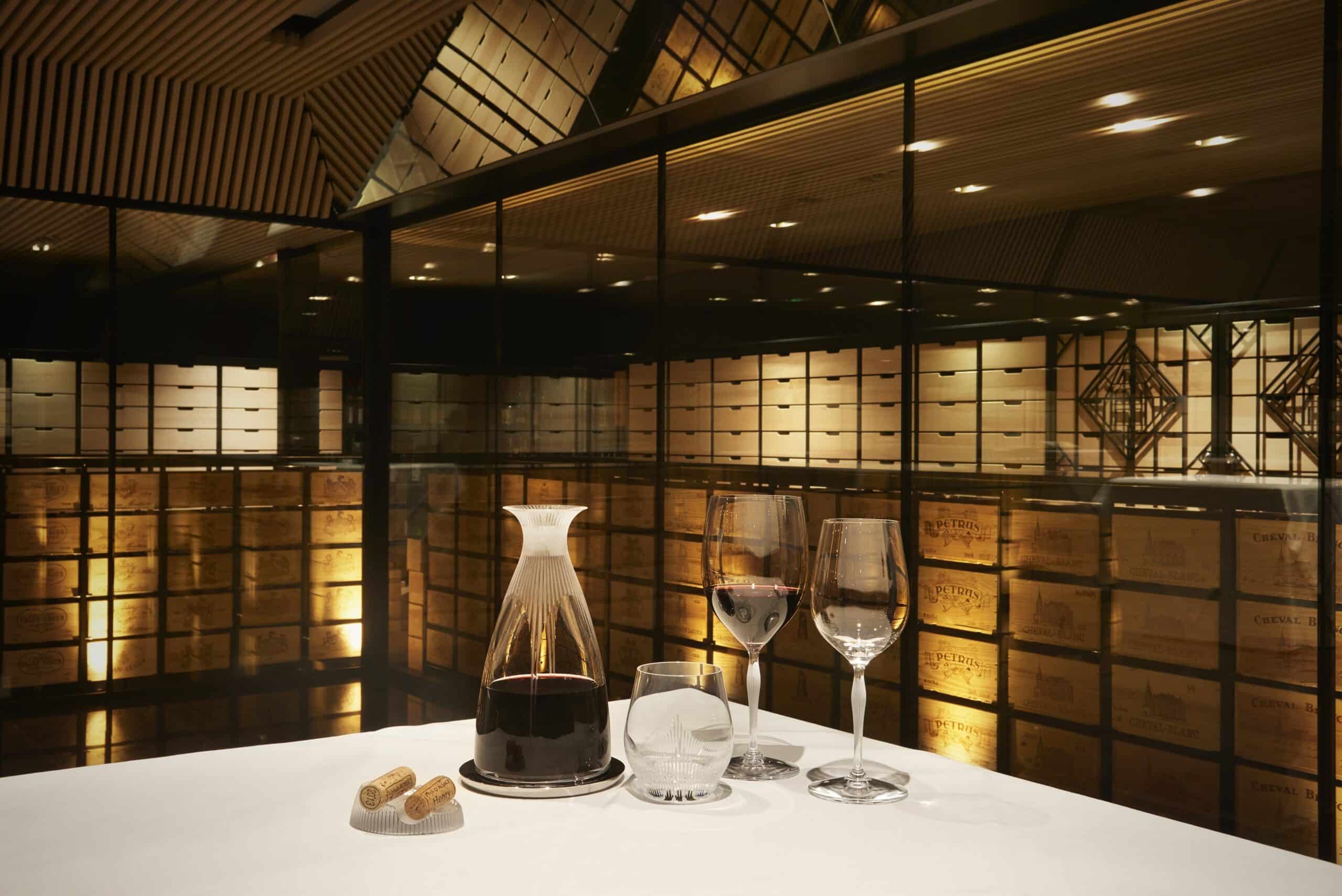
The wine cellar at Villa René Lalique designed by Mario Botta, with Lalique 100 Points wine glasses and decanter | Photos by Gilles Pernet
Even artists who have passed enjoy a lasting legacy in crystal, including the surrealist Magritte, whose signature bowler hat and pipe motifs have been immortalized by Lalique.
While René spawned a creative dynasty—his son Marc, daughter Suzanne, and granddaughter Marie-Claude all produced legendary designs—the Swiss art and fragrance company headed up by Silvio Denz has taken the company one step further since acquiring Lalique in 2008. Now known as Lalique Group, it commissions new designs and reissues some great classics. It has also diversified into crystal-enhanced furnishings and gastronomic hotels—in addition to Villa René Lalique and neighboring Château Hochberg, there is The Glenturret in Scotland, Château Lafaurie-Peyraguey in the Sauternes vineyards of Bordeaux, and coming soon, Villa Florhof in a former fifteenth-century silk mill in Zurich.
As the company strives to remain faithful to the spirit of its founder, its artisans work in both the maxi scale of Lalique in his art deco heyday and minuscule items inspired by the natural world René infused with so much fine detail. Iconic bars of the future, including those of the restaurant Daniel in New York City and the Artist Bar at London’s Dorchester Hotel, recall the wealth of glorious crystal with which the Normandie was endowed. Items like tiny Lalique fish in twenty-three different colors and the brand-new mezuzah created by Israeli sculptress-architect Irma Orenstein are emblematic of collectibles that can be cradled in the hand to admire their artistry and enhance any home. Like the four-figure Bacchantes vase, they are available online but best appreciated in person at high-end stores across the US or the company’s newest Lalique boutique at Bal Harbour in Miami.
— V —
Visit VillaReneLalique.com to learn more or book a stay, or head to Lalique.com for shopping and store locations.
Anthea Gerrie is based in the UK but travels the world in search of stories. Her special interests are architecture and design, culture, food, and drink, as well as the best places to visit in the world’s great playgrounds. She is a regular contributor to the Daily Mail, the Independent, and Blueprint.
Share This Story!
KEEP UP WITH THE LATEST STORIES FROM VIE



